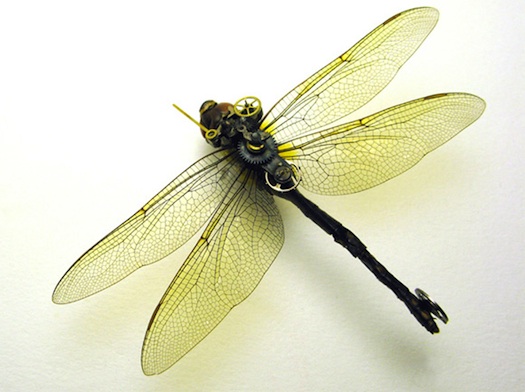
INSECT LAB
昆虫实验室
Насекомое Лаборатории

昆虫实验室
Насекомое Лаборатории

Symbiosis
In the installation area, the human body is augmented with video projected virtual images. Viewer and technology enter a symbiotic relationship and as a result, bring to life wonderful biomorphic creatures. They change constantly – reacting to your every movement and turning into new and unique forms each time. The installation was inspired by the symmetry of living organisms, the structure of exotic insects, and reflections on extraterrestrial life forms.

Angelas Flood
Angela’s Flood (El diluvio de Angela), inspirado en el panel central de El Jardín de las Delicias, es un paraíso construido para personajes femeninos, un espacio alegre que cuestiona los reiterados comportamientos violentos y sexistas a menudo asociados al mundo de los videojuegos. El título procede de la protagonista, Angela Belti, una musculosa luchadora de la serie Power Instinct (Atlus, para Arcade, 1993) cuya apariencia desafió el estereotipo de los videojuegos retro llenos de mujeres esbeltas y semi desnudas. Una variedad de sprites, entre ellos personajes marítimos, pequeños elfos e insectos, conviven en esta utopía elaborada en 2000 líneas de HTML.

Fazenda 432: criação de insetos
O Farm 432 permite que as pessoas se voltem contra o sistema disfuncional da produção de carne atual, cultivando sua própria fonte de proteína em casa. Após 432 horas, 1 grama de ovos de mosca se transforma em 2,4 kg de proteína de larva, larvas que se auto-coletam e caem limpas e prontas para comer em um balde de colheita.
.
Farm 432: Insect Breeding
Farm 432 allows people to turn against today’s dysfunctional meat production system by growing their own source of protein at home. After 432 hours, 1 gram of fly eggs turns into 2.4 kg of larva protein, self-collecting larvae that drop clean and ready to eat in a harvest bucket.
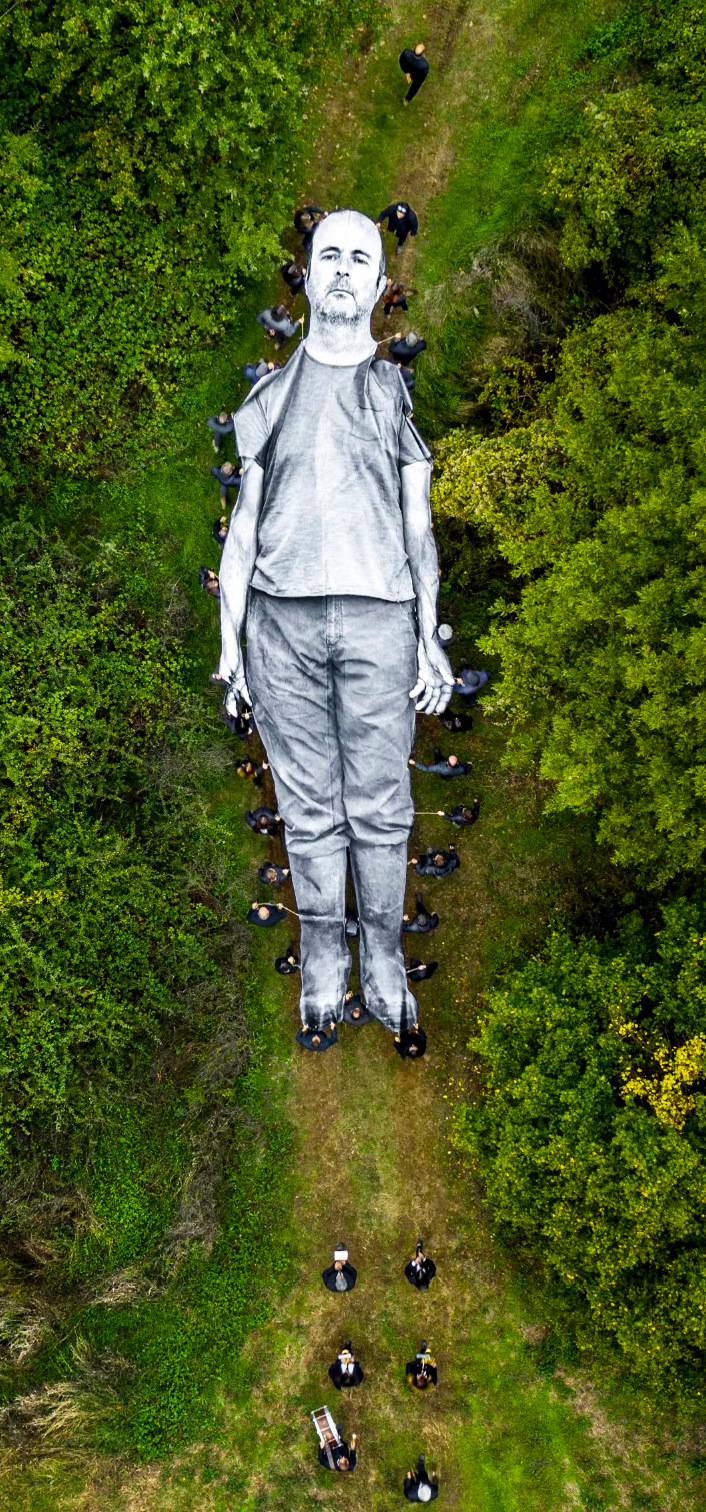
Omelia Contadina
Omelia Contadina est née de l’intérêt de JR pour les difficultés rencontrées par un grand nombre de petits agriculteurs et d’habitants des campagnes italiennes. Alice Rohrwacher explique les origines du projet: “l’automne dernier, lors d’une promenade à la frontière entre l’Ombrie, le Latium et la Toscane, j’ai fait part à mon ami et artiste JR de mes inquiétudes quant à la destruction du paysage agricole, violé par les monocultures intensives avec quelles grandes entreprises façonnent des territoires entiers. Je lui ai raconté, en fille d’apiculteur, la mort massive d’insectes que provoquent de tels changements… À un moment donné, nous nous sommes arrêtés à un carrefour: de tous côtés, des rangées ininterrompues de noisetiers remplissaient le paysage jusqu’à l’horizon. En regardant cela, nous nous sommes dit que cela ressemblait à un cimetière de guerre. Sur le chemin du retour, nous avons décidé – si cela ressemble à un cimetière, nous devons organiser des funérailles. Mais ce doit être un enterrement plein de vie!”

PLEXUS
Aurélien Bory is a Toulouse-based choreographer working at the intersection of dance, circus and visual art. In Plexus, he encloses the Japanese dancer Kaori Ito in a forest of tensioned vertical cables. It’s as if she’s in a transparent cuboid cage. We can see her, but her image is blurred by the shimmer of Arno Veyrat’s lighting as it moves across the cables. Ito strains against these confines, writhing, flailing and hurling herself against the cables. Every sound is hugely amplified, so with her every movement we are assailed by a high-tensile jangling and groaning. At intervals she subjects her environment to furious challenge, racing backwards and forwards within the limited inner space so that the cage rocks on its axis. At other times she positions herself between the cables so that they bear her weight, and hangs there like an exhausted insect, faintly articulating her limbs.
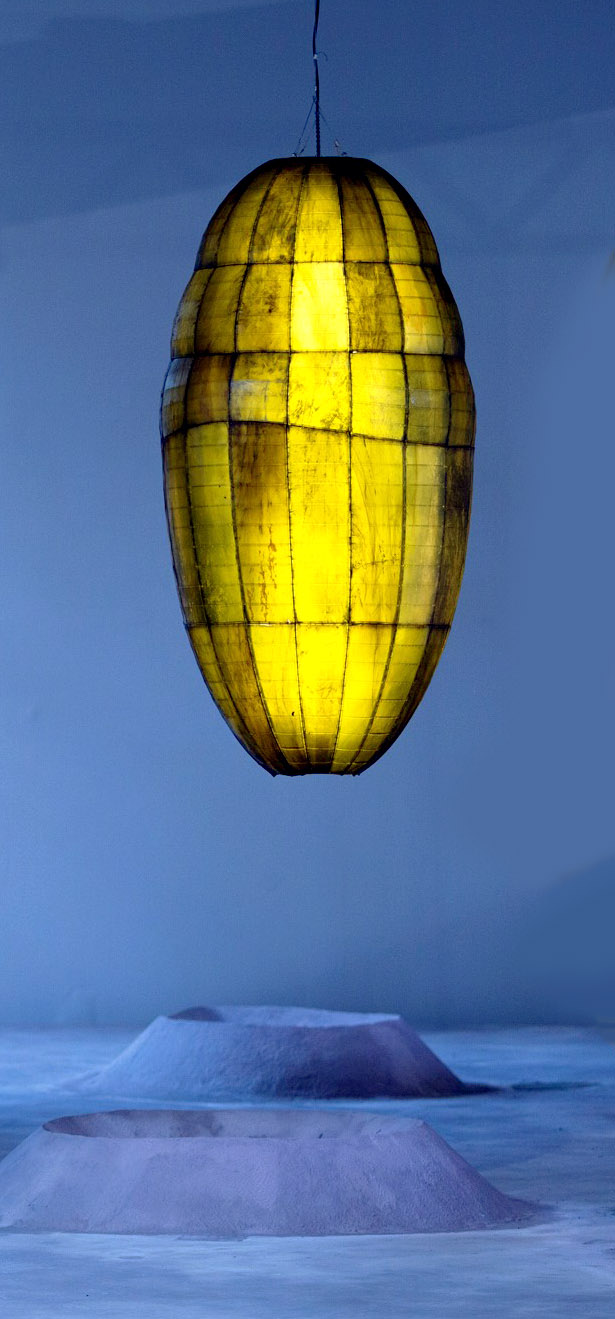
Biologizing the Machine
In Biologizing the Machine (tentacular trouble), the artist uses a stretched leather-like kelp to create hanging incandescent sculptures that conjure up images of organisms such as human organs and insect eggs through chrysalis-like pods within which animatronic insects flutter about. The use of this material calls attention to the ecological history and exciting potential uses of algae, a powerful and shapeshifting entity comprising the largest biomass on the planet. The ground beneath evokes a swamp (not too dissimilar from the watery underbelly of Venice) from which these organisms and other primordial beings may have come.

Omelia Contadina
‘Omelia Contadina’ was born out of JR’s interest in the difficulties encountered by a large number of small farmers and inhabitants of rural italy. Alice Rohrwacher explains the origins of the project: ‘last autumn, during a walk on the border between Umbria, Lazio and Tuscany, I told my friend and artist JR of my concerns about the destruction of the agricultural landscape, violated by the intensive monocultures with which major corporations are shaping entire territories. I told him, as the daughter of a beekeeper, of the mass death of insects that such changes bring about… At one point, we stopped at a crossroads: on all sides, uninterrupted rows of hazelnut trees filled the landscape as far as the horizon. As we looked upon this, we commented to each other that it looked like a war cemetery. On the way back we decided — if it looks like a cemetery, we have to hold a funeral. But it must be a funeral full of life!‘

Lasermice
“Lasermice” is a swarm robotic installation that consists of 60 small robots, which inspired by synchronous behavior from insects like fireflies. Normally network of swarm is invisible, But in this case those robots creates visible network via laser light – photodetector communication. As a result, they generates rythme that continuously changing. The generated rhythm is made audible by solenoid which strikes floor. Combination of visible network and audible rhythm are deployed spatially.

insect microscope
The scientist at Howard Hughes Medical Institute’s Janelia Farm Research Campus, has been using laser-scanning microscopes to capture the incredible details of the insect world unseen to our naked eyes. Not only that, he also colors the pictures to show the tree-like structures that turn the pictures into these vibrant blueprints of life.

Amphibio
AMPHIBIO is made out of a special porous hydrophobic material which supports underwater breathing by replenishing oxygen from the surrounding water and dissipating carbon dioxide which accumulate in the system, inspired from the gill of water diving insects. The material can be shaped in complex form using 3D printing. Patent pending.

Devil’s Flower Mantis
“Ten years ago I decided to change my field of research to one that is more in tune with my naturalist’s interests. Neurobiology is the study of cells of the nervous system and the organization of these cells into functional circuits that process information and mediate behavior. Insects, having a relatively simple and hence easier to study, nervous system, are commonly used as models, the premise being that on the most basic level of relatively simple neuronal networks we have a lot in common. It was my extracurricular expertise in invertebrate anatomy and macro photography that made the transition possible.”
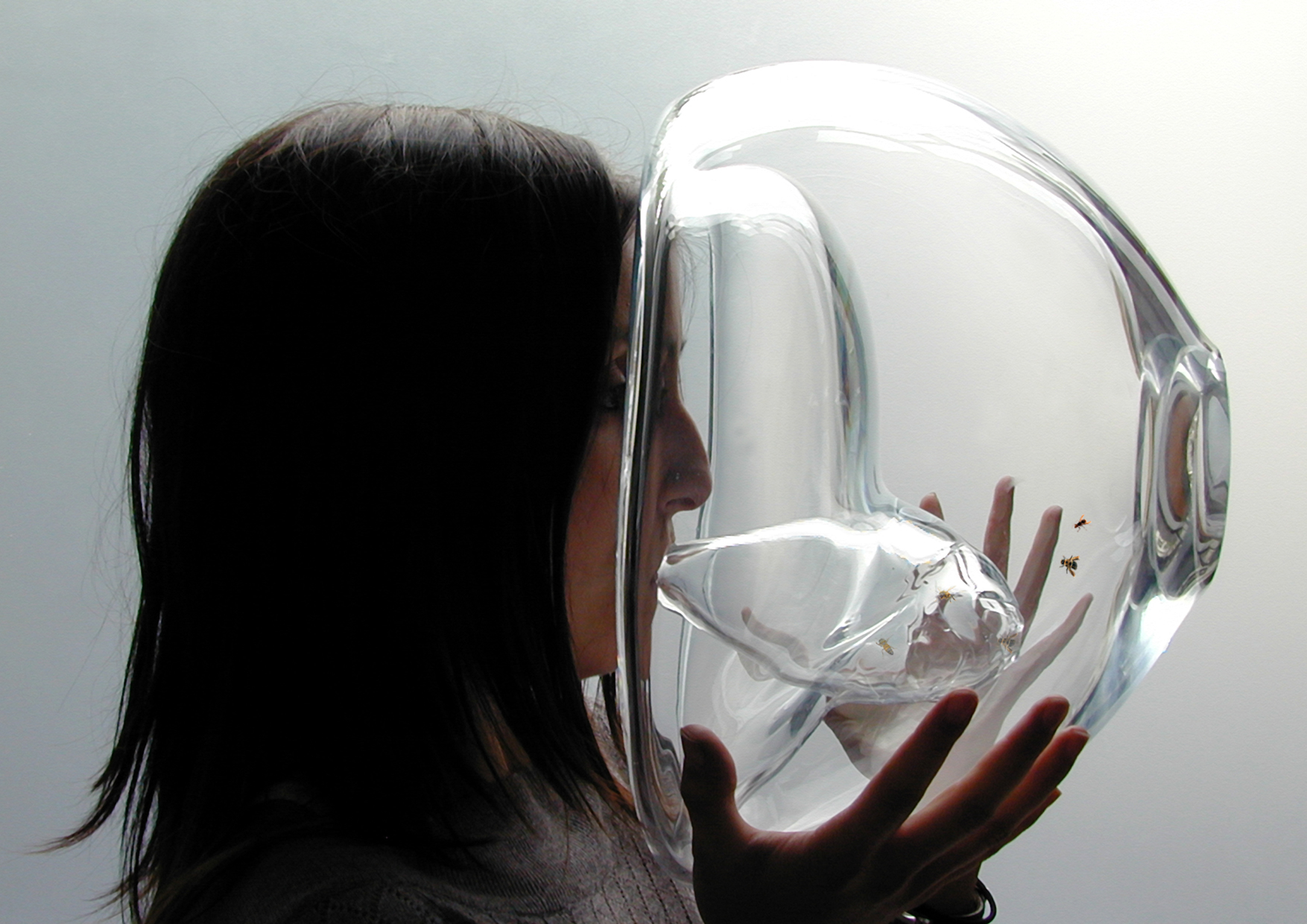
Life Support
Les abeilles sont entraînées en utilisant le réflexe de Pavlov pour cibler une odeur spécifique et leur plage de détection comprend les phéromones, les toxines et le diagnostic des maladies. Non seulement ils peuvent parcourir de grandes distances à la recherche de ce que vous voulez qu’ils reniflent, mais cela ne prend que quelques minutes pour les entraîner, contrairement aux chiens dont la formation peut durer jusqu’à un an. Leur comportement peut être conditionné par des récompenses telles que l’eau sucrée. Ils sont placés dans des récipients en forme de paille et conçus pour sentir une combinaison, disons de sucre, avec de minuscules résidus de TNT. C’est tout! Le sens aigu de l’odorat des abeilles associera alors l’odeur des explosifs à la nourriture. Dans son projet BEE’S, Susana utiliserait les insectes comme biocapteurs, exploitant leur odorat extroadinaire pour détecter des maladies telles que le cancer du poumon, le cancer de la peau et la tuberculose. En outre, ils pouvaient repérer le problème très tôt bien mieux que les machines. Ils pourraient même détecter si une femme est enceinte, ce que je trouve beaucoup plus attrayant et élégant que la méthode habituelle qui consiste à faire pipi sur un morceau de plastique.La créatrice a visité la London Beekeepers Association et a utilisé du chewing-gum dans ses tests avec les abeilles. Elle a ensuite localisé un maître verrier et fait souffler des objets en verre. Les gens respiraient dans les outils de diagnostic en verre où les abeilles sont gardées pendant la courte période de temps nécessaire pour leur permettre de détecter les cycles généraux de santé et de fertilité. Pour éviter que la bouche n’entre en contact avec l’insecte, il existe deux sphères différentes, l’odeur de l’abeille étant suffisamment forte pour renifler ce que vous respirez à travers le verre. Bess se précipiterait dans les tubes qui mènent plus près de la respiration quand ils détectaient une maladie qu’ils associent à la nourriture. Dans son scénario, les gens recevraient des abeilles entraînées par la poste (rien de rare ici apparemment), procéderaient au test respiratoire que de libérer les abeilles.BEE’S explore comment nous pourrions cohabiter avec les systèmes biologiques naturels et utiliser leur potentiel pour augmenter nos capacités de perception. . Nous avons toujours coexisté avec ces systèmes, mais leur potentiel était inconnu. Ce projet est basé sur des recherches en cours qui ont fourni les connaissances nécessaires pour permettre de nouvelles interactions. L’objectif de ce projet est de développer des relations de collaboration entre la recherche scientifique et technologique, les apiculteurs et le design, entre autres, traduisant le résultat en systèmes et objets que les gens peuvent comprendre et utiliser, engendrant des ajustements significatifs.

לורן סרוסי
INSECTES
Photographer and graphic designer Laurent Seroussi combined the beauty of the human female form with fascinating, symmetrical, and leggy bug bodies in this project entitled Insectes. The fantasy creations incorporate sleek female figures blending with the bodies of insects in extremely realistic and well-photoshopped depictions.

לורן סרוסי
insectes
Seroussi personifies the insects that crawl or fly around us by merging strong bodies, human faces, and the fine details of these segmented creatures. As the feminine faces glance over their shoulders or close their eyes with sleek and sensual expressions, Seroussi romanticizes the small creatures that we otherwise chase out of our lives and our homes.
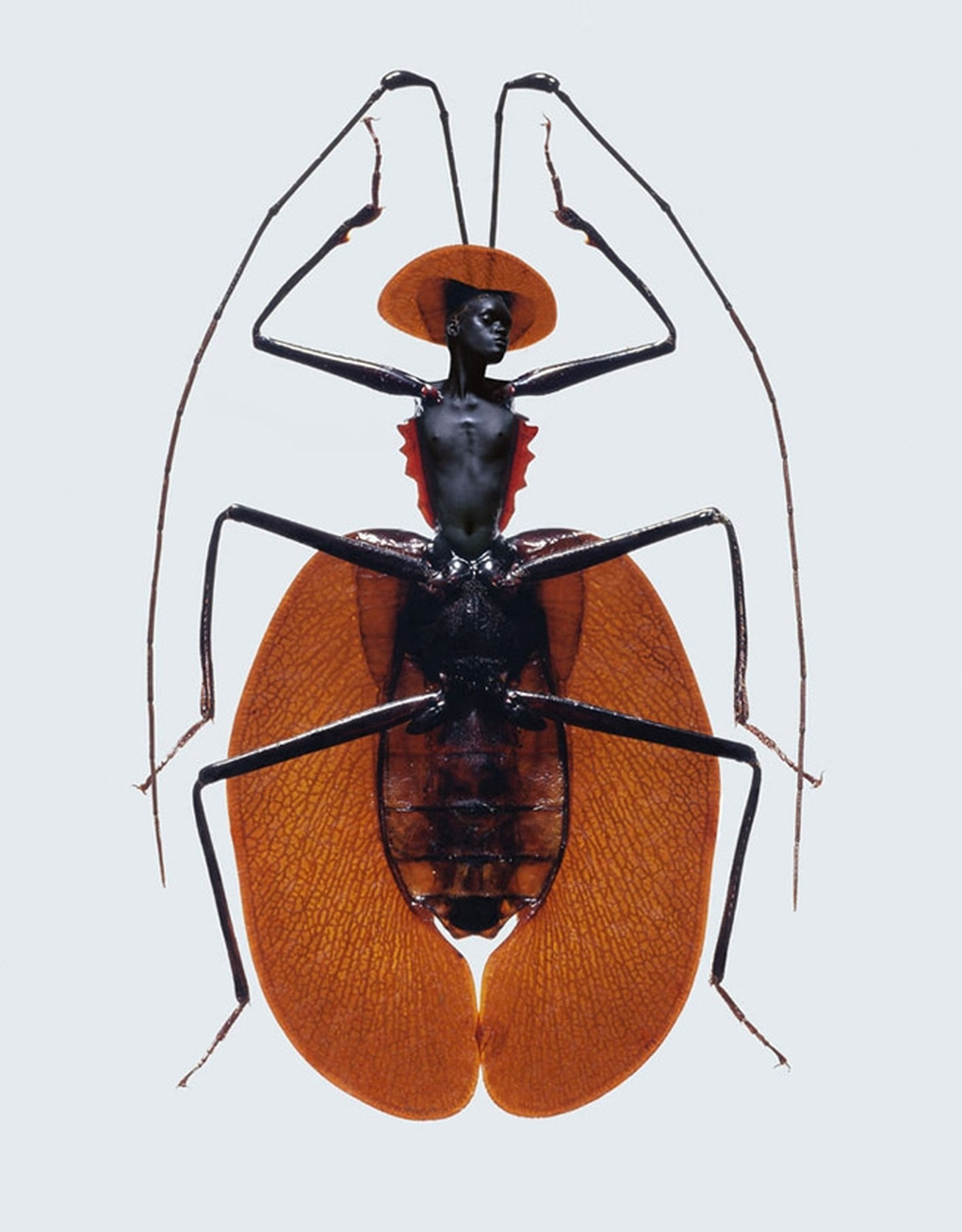
לורן סרוסי
INSECTES
Чрезвычайно талантливый французский фотограф Laurent Seroussi работала с большинством французских суперзвезд. Многогранные образы Лоран поражают воображение игривыми визуальными трюками и волшебством трансформаций. Ее творчество не ограничено только графическим дизайном, она работает и с видеоматериалом.


КЛЕР МОРГАН
كلير مورجان
克莱尔·摩根
クレア·モーガン
클레어 모건
If you go down to the woods today
British artist Claire Morgan creates stunning installations out of organic materials including animal taxidermy, seeds, and insects. Morgan often uses taxidermied birds in her works, suspending the birds among intricate arrangements of thistle seeds, bees, or other small objects.
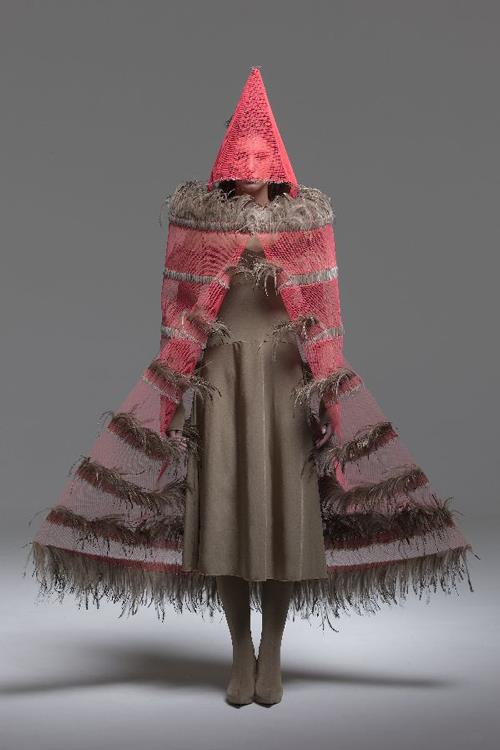
Emu Flag
The reproductive organs of insects come in all different shapes and are actually quite beautiful. Some look like intricate flowers, others like exotic coral. Most look as though they belong to the biology of some distant planet. Maria Fernanda Cardoso has made her fascination with the natural sciences the basis of her art for many years, with the help of her husband and artistic collaborator Ross Harley.

Insects au Gratin
Das Projekt sucht nach neuen Wegen, Insekten zu konsumieren, und diskutiert die Nährstoff- und Umweltaspekte von Insekten als menschliche Nahrung. Durch die Kombination von Entomophagie mit neuen 3D-Technologien für den Lebensmitteldruck ermutigt Insects au gratin die Menschen, über nachhaltigere Ernährungsweisen nachzudenken. “Warum nicht Insekten essen?” Dies war die Frage, die Vincent Holt 1885 stellte, als er im St. Paul Daily Globe vorschlug, dass Insekten als primäre Nahrungsquelle für den Menschen dienen könnten. Während die Idee von den Viktorianern abgelehnt wurde, haben Insekten an vielen Orten auf der Welt eine lange Geschichte als Nahrung. Wie Holt betonte, sind Insekten alle Gemüsefresser, sauber, schmackhaft, gesund und in ihrer Fütterung entschieden spezifischer als wir ‘. Sie sind auch enorm effizient bei der Umwandlung von Vegetation in essbares Protein. 100 kg Futter produzieren 40 kg Grillen, aber nur 10 kg Rindfleisch. Insekten Au Gratin sucht nach neuen Wegen, Insekten zu verzehren, und diskutiert die Nährstoff- und Umweltaspekte von Insekten als menschliche Nahrung. Einer der Aspekte, der Menschen davon abhält, Insekten zu essen, hat nicht nur mit dem kulturellen Hintergrund zu tun, sondern auch mit der Ästhetik der Gerichte selbst.

Mobility
The installation spans a corridor of 7-metres width. On the left wall one hundred prosthetic hands arranged in a matrix revolve around their own vertical axis, the movements being controlled by motors. The mirrors they hold reflect the beam of a strong light across the space and onto the opposite wall. What initially seems like an asynchronous, chaotic pattern of movement soon reveals itself as a complex, computational choreography: at first the hundred light spots move around a central point, akin to the celestial dynamics of the planets or the flight pattern of a swarm of insects and creating the impression of a three-dimensional space. Then suddenly this organic oscillation converges to form a Chinese character denoting movement and action.
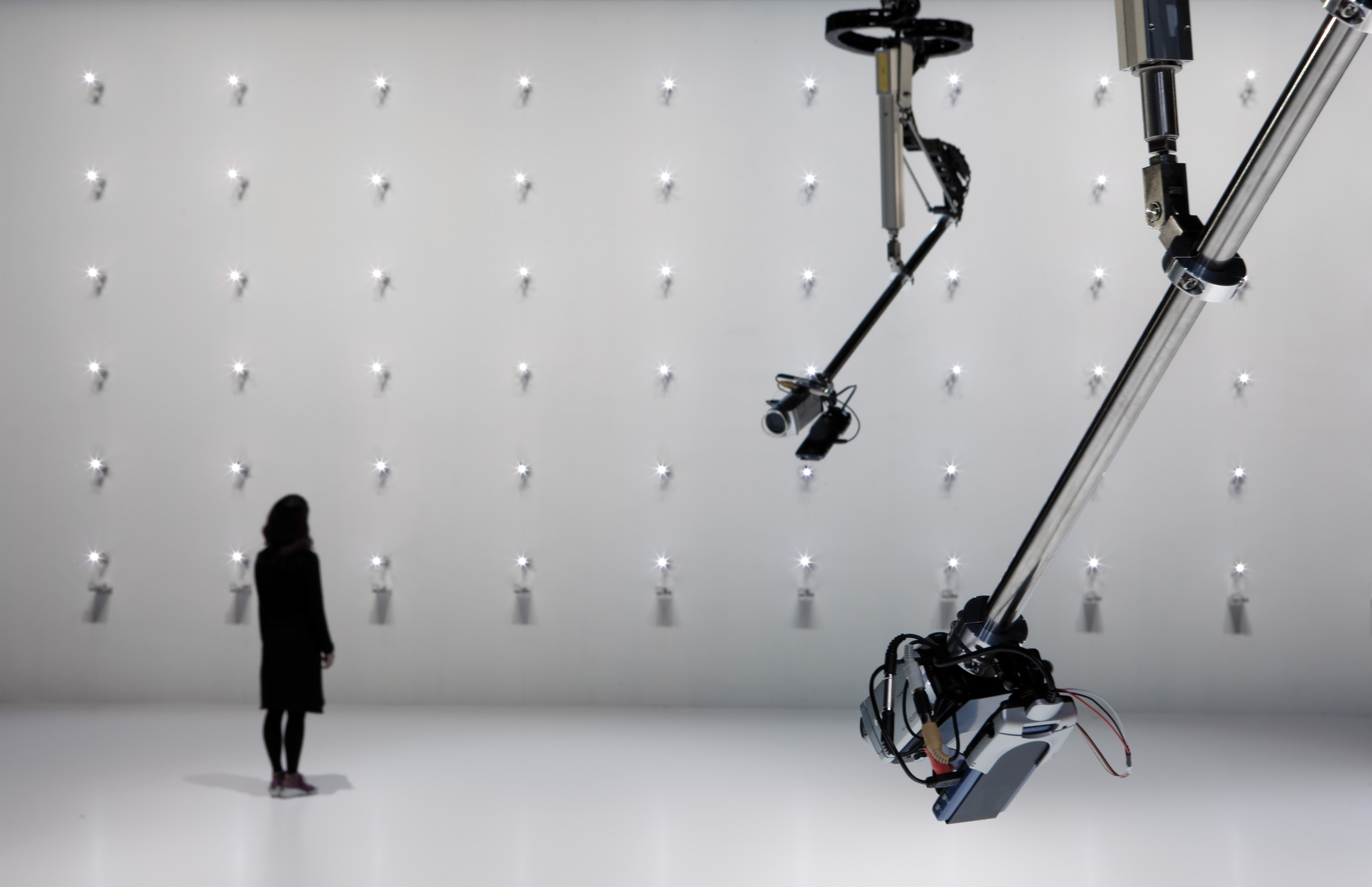
Desire of Codes
This interactive installation consisting of three parts is set up in YCAM’s Studio A, a space that is normally used for theatre performances.
A large number of devices resembling tentacles with built-in small cameras are placed across a huge wall (Part 1), while six robotic “search arms” equipped with cameras and projectors are suspended from the ceiling (Part 2). Each device senses with insect-like wriggling movements the positions and movements of visitors, and turns toward detected persons in order to observe their actions. In addition, a giant round-shaped screen that looks like an insect’s compound eye is installed in the back of the exhibition space (Part 3). Visual data transmitted from each camera, along with footage recorded by surveillance cameras installed at various places around the world, are stored in a central database, and ultimately projected in complex images mixing elements of past and present, the venue itself and points around the globe, onto the screen. The compound eye visualizes a new reality in which fragmentary aspects of space and time are recombined, while the visitor’s position as a subject of expression and surveillance at once indicates the new appearances of human corporeality and desire.

Катарины Унгер
FARM 432 : INSECT BREEDING
By 2050 meat production will have to increase by 50%. Considering that we already use one third of croplands for the production of animal feed, we will have to look for alternative food sources and alternative ways of growing it.Farm 432 enables people to turn against the dysfunctional system of current meat production by growing their own protein source at home. After 432 hours, 1 gram of black soldier fly eggs turn into 2.4 kilogram of larvae protein, larvae that self-harvest and fall clean and ready to eat into a harvest bucket.This scenario creates not only a more sustainable future of food production, but suggests new lifestyles and food cultures.Black soldier fly adults don´t eat, the larvae can be fed on bio waste, therefore the production almost costs no water or CO2. Black soldier fly larvae are one of the most efficient protein converters in insects, containing up to 42% of protein, a lot of calcium and amino acids.





Леонел Моура
AIR (Art Insect Robots)
AIR (Art Insect Robots) is an installation with 50 small robots confined inside large glass drops. Feed by photovoltaic cells these robots get agitated from time to time hitting the glass. The collective “performance” produces an artificial and autonomous music.
